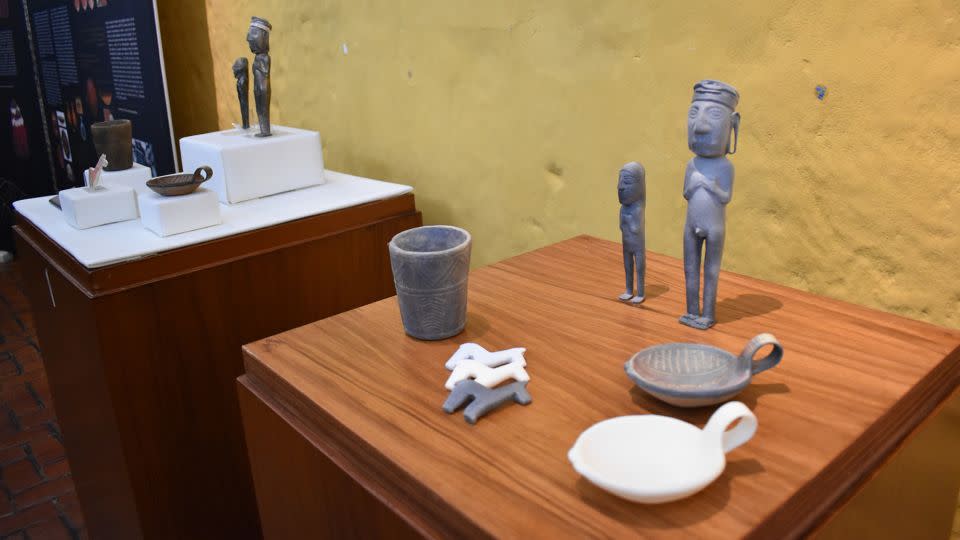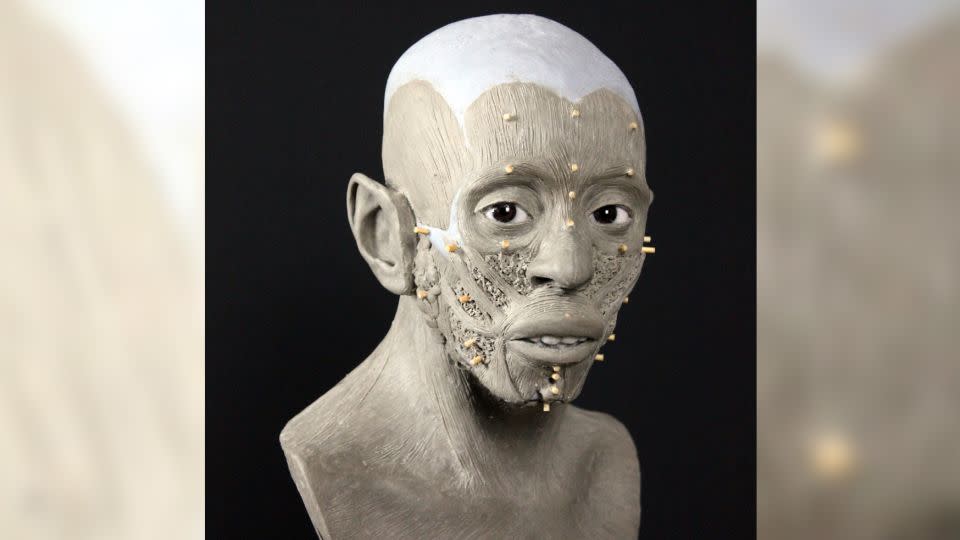A young woman was sacrificed and frozen for 500 years in the Andes. Scientists just revealed her face
Sign up for CNN’s Wonder Theory science newsletter. Explore the universe with news on fascinating discoveries, scientific advancements and more.
Five hundred years ago, a teenage girl who was part of the Inca culture was sacrificed and buried near the summit of Ampato, a dormant volcano in the Andes Mountains. Since the discovery of her incredibly well-preserved frozen remains in 1995, she has become known by many names — the “Ice Maiden,” Juanita and the Lady of Ampato — but little was known about who she really was.
Now, Swedish artist Oscar Nilsson and a team of researchers from the Center for Andean Studies at the University of Warsaw and the Catholic University of Santa Maríahave have collaborated to create a 3D reconstruction of Juanita’s face.
The reconstruction, unveiled on October 24, is part of an exhibition at the Andean Sanctuaries Museum in Peru called “Capacocha, following the Inca Divinities.” The exhibition includes the latest research about Juanita and her life, as well as the findings from other Incan mummies discovered along the peaks of the Peruvian Andes.
“For many years, mummies were treated as objects in the museum,” said Dr. Dagmara Socha, bioarchaeologist at the Center for Andean Studies at the University of Warsaw and curator of the exhibit. “By conducting scientific research and facial reconstruction, we want to restore their identity. A well-made reconstruction allows us to show the people who were behind the story we want to tell.”
Finding Juanita
The Inca Empire, which lasted from around 1200 to 1533, once stretched for 2,500 miles (4,023 kilometers) across what is now Peru and Chile. One of the most crucial rituals to the Incas was capacocha, Socha said, which involved human sacrifices with offerings of prestigious goods such as ceramics, precious metals, textiles and seashells.
The rituals were carried out to appease deities and sacred places and protect the community from disasters such as droughts, volcanic eruptions and earthquakes, according to researchers. The peaks of the Andes were considered sacred places, and children and young women, considered beautiful and pure, were chosen for the sacrificial rituals. Their sacrifices were thought to bring honor to their parents and an afterlife of bliss.
Once sacrificed, the children and young women were considered “mediators” between humans and deities. It was believed that the children became reunited with their ancestors, who were thought to watch from the towering peaks of the Andes, the researchers said.
Dr. Johan Reinhard and assistant Miguel Zarate discovered Juanita when they ascended Ampato in September 1995. They reached the summit, 20,708 feet (6,312 meters) above sea level, only to discover that part of its ridge had collapsed, exposing an Inca burial site and tumbling the contents about 229 feet (70 meters) below.
Reinhard and Zarate spotted a bundle of cloth, and lifting it, they found themselves looking into the Ice Maiden’s face. Carefully, they brought Juanita down the mountain, where she is kept to this day in a chamber set at minus 4 degrees Fahrenheit (minus 20 degrees Celsius) in the Andean Sanctuaries Museum of the Catholic University of Santa María, where museumgoers can see her on display.
Studies have revealed that Juanita was a healthy girl between 13 and 15 when she died from a blow to the head.

She was buried in ceremonial clothing, along with ceramic objects, gold and silver female figures, a Spondylus shell, food, woven bags and pottery. The ceramic objects were decorated with geometric figures, which are still being studied and may have been part of an Inca communication system.
Coming face to face
In 2018, Socha and a team of archaeologists and scientists began a five-year project to research Juanita as well as other remains and objects found on the snow-covered Ampato, Misti and Pichu Pichu volcanoes.
During their work, the team discovered that some of the children and women chewed coca leaves and drank ayahuasca in the weeks before their deaths. The findings suggest that hallucinogenic plants and psychotropic stimulants may have been used to reduce anxiety before their deaths.
The team conducted CT scans of Juanita in March 2022 and used the results to create a 3D model of her skull that Nilsson could use to guide his reconstruction.
Tomography scans of her body and skull, combined with research about her age, complexion and other characteristics were used to create digital images. Nilsson used tissue depth markers based on the measurements of her skull to envision the proportions of her face, which included high cheekbones.

His process of bringing Juanita’s face to life took half a year, and he spent 400 hours working on the model.
Known for his work in recreating faces from the past, Nilsson employed a forensic reconstruction technique that relied on a variety of scientific analyses to make Juanita look as realistic as possible.
“It is a fantastic job I have, but I also feel a great deal of responsibility to get the reconstruction as accurate as I can,” Nilsson said. “But it is the best work I can imagine. I hope you will be able meet an individual from the past and to create an emotional bond to history, and her story that is so unique and remarkable.”
Reproductions of the headdress and shawl she wore were naturally dyed and made from alpaca wool by Centro Textiles Tradicionales in Chinchero and Cusco, Peru.
Visitors to the exhibit can also learn about the results of the research, see artifacts from the burials and hold replicas of them. They can even walk in the footsteps of Juanita from Cusco, the capital of the Inca Empire, across ranches, or tambos, where the caravan rested before the sacrifice, and all the way up to the peaks.
“Using (virtual reality) goggles, the visitors can make a virtual pilgrimage in the footsteps of capacocha, following the remains of Inca roads to the tambos — the last stops — on the slopes of Chachani, Misti and Pichu Pichu,” Socha said.
For the researchers who have spent years studying Juanita, the arduous process to bring her back to life was worth it.
“The face gives us the hyperrealistic impression of looking at the living person,” Socha said.
“It was for me a very emotional moment after working so many years with these mummies, to be able to finally look at her face.”
For more CNN news and newsletters create an account at CNN.com

